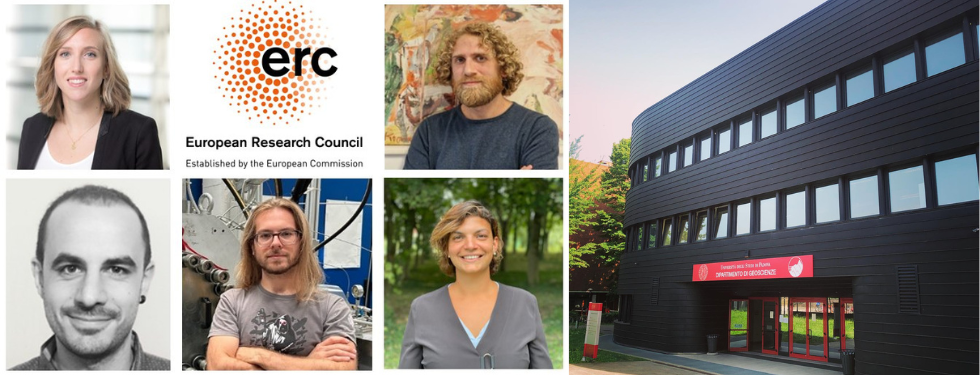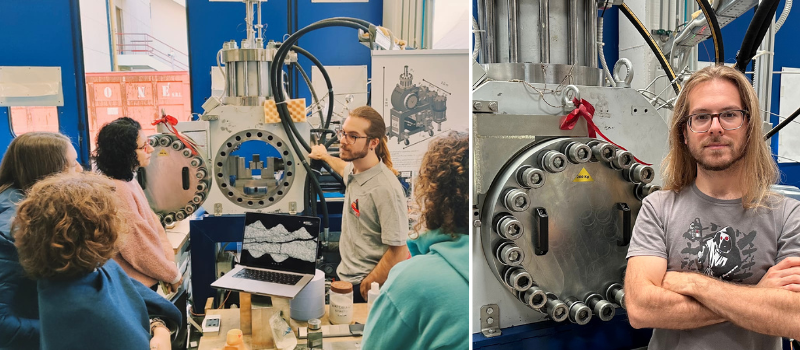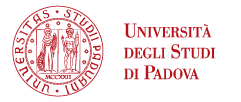Giacomo Pozzi is among the winners of the ERC Starting Grants 2024 call

In 2024 the University of Padua ranked first in Italy for the number of ERC Starting Grants projects won, thus confirming its position among the most prestigious national universities.
Five researchers (Principal Investigators) have obtained funding by choosing the University of Padua to carry out their highly ambitious and innovative research activity.
This unprecedented result demonstrates the University of Padua's ability to train and attract young researchers capable of proposing revolutionary projects in the field of basic science and of competing successfully at a European level.
Giacomo Pozzi, a researcher at INGV in Rome, is among the winners of the call, and he will soon join the Department of Geosciences of the University of Padua to conduct his innovative project on the origin of earthquakes, called OMEN (Observing the Mechanisms of Earthquake Nucleation).

Let’s meet him better through our interview
Giacomo, can you tell us a bit more about your scientific path?
During my undergraduate years in Padua, I studied the pegmatites of the Central Alps, thin granitic intrusions capable of recording the deformative history of the orogen. With a change in research theme, I began my PhD in Durham, UK. There, I conducted rock deformation experiments at speeds and pressures typical of the propagation phase of earthquakes. During this phase, the rocks heat up to the point of drastically weakening, facilitating seismic slip. I showed that some rocks can weaken by crystal plasticity without melting. After, I moved to Rome at INGV working as contract researcher. My studies shifted to the origin of earthquakes, the so-called nucleation phase, which is controlled by mechanisms that are still poorly understood. My research showed how small-scale structures can play a foremost role during earthquake nucleation. These results inspired my project, OMEN, aimed at the documentation and quantification of such elusive mechanisms using a new experimental methodology.
The goal of your project is to observe the mechanisms of earthquake nucleation and to go beyond current experimental approaches, which rely only on indirect measurement of sample properties and/or the use of rock-like materials. How will you reach this ambitious aim?
With my project I will build an innovative deformation apparatus that is equipped with several observation windows and sample holders made with high-technology glass. Differently from previous experimental approaches, the highly resistant glass will allow for the first time to deform natural rocks at conditions typical of crustal depths while simultaneously filming their structural evolution and inner mechanisms at work. Observing and documenting how rocks behave during a simulated seismic cycle will ultimately unravel the hidden phenomenology at the origin of earthquakes.
How will you integrate the experimental part of the laboratory with field observations?
The spatial arrangements of rock elements formed during different deformation experiments can be also found in several natural faults, allowing to infer whether these textures were formed during an earthquake or not. By sampling experimental and natural textures and by analysing them with an electronic microscope, I will be able to tune our laboratory research to better match the natural phenomena. This match is fundamental to validate the applicability of experimental results to nature and to lay a solid base to the study of the mechanisms of seismogenesis.
What do you expect from the end of your ERC project?
By the end of OMEN, I expect to provide a new understanding of the origin of earthquakes stemming from the integration of extensive laboratory results, field observations, and innovative analytical techniques. I also expect that our team will provide new constitutive equations for the better description and quantification of earthquake generation mechanisms, with the ultimate goal of refining models for earthquake occurrence and seismic hazard assessment.
What are the peculiarities of an ERC Starting Grant proposal? In other words, what does it take to get an ERC and what are the strengths of your project?
Writing an ERC Starting Grant proposal provided me with a challenge growing up to the last minute! When writing, one realises that many ingredients are required to compose a successful recipe. These are: a relevant scientific question, a novel scientific approach, a captivating but simple narrative, clear goals, and the solid motivation of the candidate to achieve them. All of these aspects need to be in equilibrium. I think that the strength of my project is the idea that we can use relatively simple setups to have a direct view of the hidden mechanisms at the origin of earthquakes in natural materials, at realistic conditions. In science, the direct observation and documentation of how phenomena behave is the most powerful tool to build our knowledge on the matter, and this was not an easy task for earthquakes that reside deep in the Earth.
If you were advising a researcher who is thinking of applying for an ERC Starting Grant, what would it be?
Be passionate about your ideas and understand why they are relevant to the community. If you believe your research has the potential to make an impact, work on making it easy to communicate and accessible to everyone, not just those in your field. This is an essential first step on the path to winning an ERC.
You graduated in Padua, and now you are returning here after gaining extensive professional experience both abroad and in Italy. How do you feel? How do you imagine the first day you set foot in the Department again?
I am grateful for the opportunity I have had to grow both scientifically and personally, in Italy and abroad. Working in another country and interacting with people from different backgrounds in a multicultural environment has significantly broadened my perspective. Now, returning to Padova feels like coming home as a different, more mature person. I am excited to be able to actively share what I have learned with other young scientists, and I look forward to contributing to the department that taught me the science I love.
Interview by Barbara Paknazar





